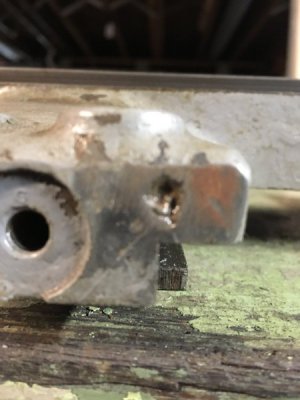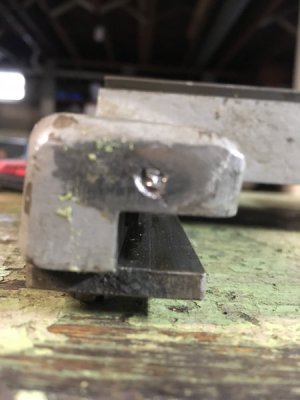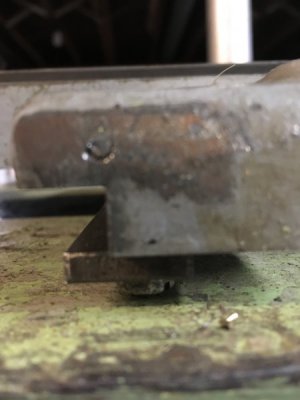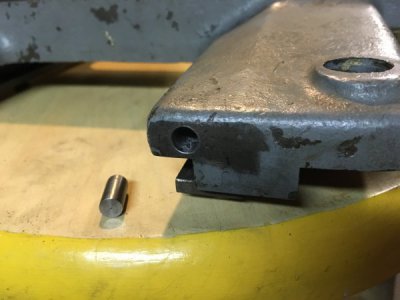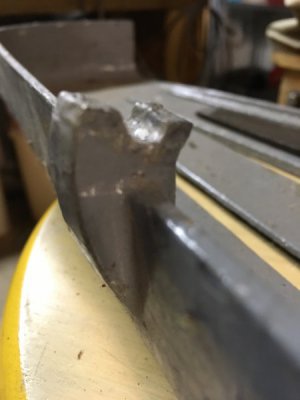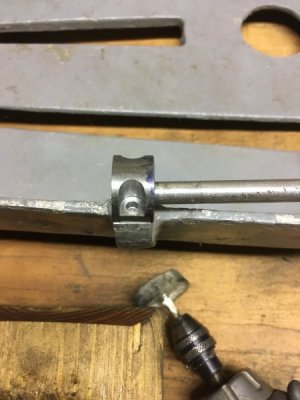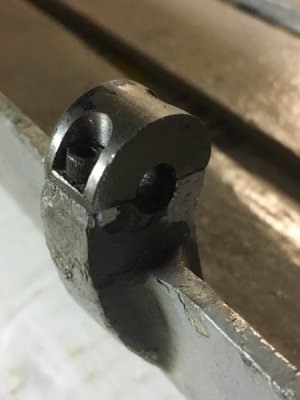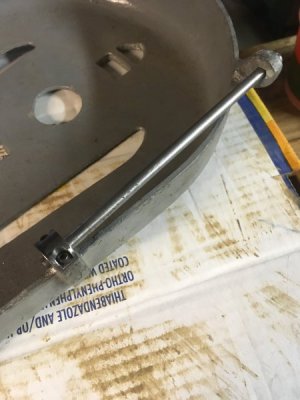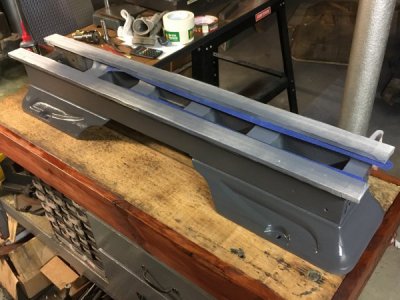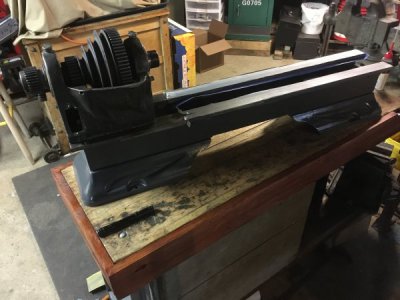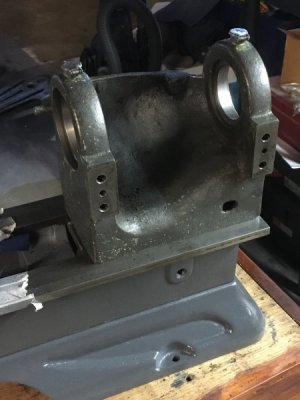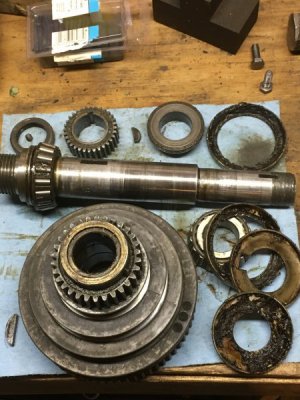On the model number, as I said earlier, the most likely case is that the headstock isn't "original". The second most likely is that the bed and name plate are not "original".
On the problem with the threads and the missing brass, first thing to do is to get new brass plugs. If you need something else from Clausing, order two (or four) from them. They are cheap but shipping isn't. Otherwise, determine the ID of the threaded collar holes and by a foot of brass rod in that diameter. With something like a Dremel tool and cut-off disk, cut off two pieced between 1/3 of the tapped holes minor diameter. To make the threads usable again, by a thread file set. The last set that I bought came from McMaster (who should also have the brass rod). The source of the set that I retired last year is lost in the mists of time. The set was two pieces each about 1/2" square and eight or ten inches long. Use this to clean up the spindle threads. Then when you have the spindle back in the headstock, use the proper pitch face to clean up the threads until the collar will easily screw back on. When you have the threads cleaned turn the collar over so that probably the set screws and plugs won't be coming down on the bad spots.
Instructions for disassembly and assembly of the Timken headstock are in Downloads, along with a lot of other stuff. Access to downloads is available to all donors. Minimum is $10.00 per year.
